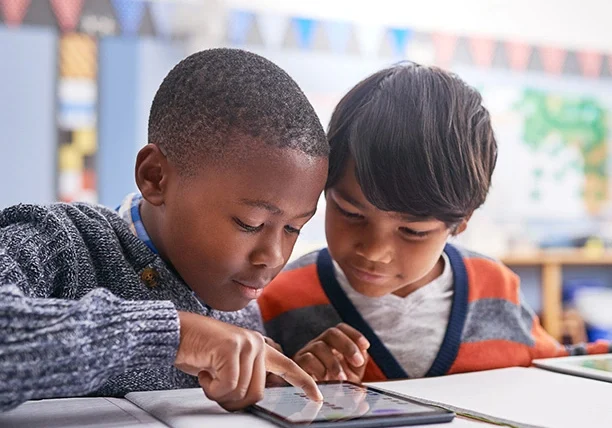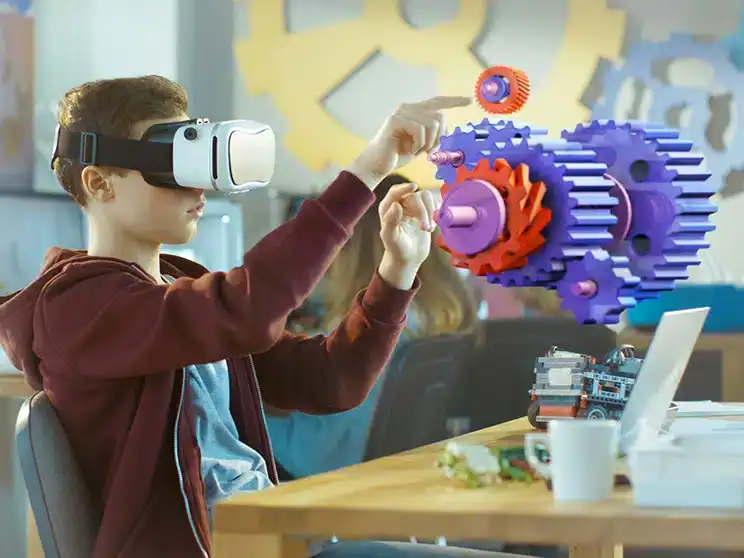Discovering the Importance of Technology in Education
Updated: June 19, 2024
Published: May 24, 2019

Technology has taken over our world and has dramatically changed the way we live, work, and learn. In the education sector, technology has been a game-changer and has transformed the traditional methods of teaching and learning. In a classroom setting, students are often given a lot of information to process quickly. This can be overwhelming and cause confusion. Technology provides access to numerous online resources that support independent learning and research. It also helps simplify the learning process by making concepts easier to understand, for example through instructional videos.
Gone are the days of rote memorization and blackboard lectures. Today’s students are digital natives, who have grown up surrounded by technology and are accustomed to a more interactive, dynamic learning experience. Let’s take a closer look at the importance of technology in education.

How Important is Technology in Education?
Technology enhances the learning experience for students by providing them with the tools and resources necessary to succeed. From online resources that help simplify complex concepts to interactive learning experiences that keep students engaged, technology provides students with the support they need to thrive in the classroom and beyond.
Here are reasons why technology is important in education. They include more engaged students, support for multiple learning styles, better collaboration, more instant feedback for teachers, and preparation for the future. Let’s take a closer look at the importance of technology in education:
Enhances Creativity and Innovation
Technology has opened up a world of opportunities for students to be creative and innovative. With access to a wealth of information and resources at their fingertips, students can experiment, explore and bring their ideas to life.
This type of hands-on learning is much more engaging and enjoyable for students and helps to foster critical thinking skills. For example, students can use graphic design software to create posters, animations, or videos to present their ideas.
They can use 3D printing to design and create prototypes of their inventions. They can even use virtual and augmented reality to bring their ideas to life and make them more interactive.
Supports Personalized Learning
One of the biggest benefits of technology in education is personalized learning. With online resources and educational software, students can find information that is tailored to their needs, interests, and learning style.
They can work at their own pace, repeat lessons if they need to, and access information that is relevant to their studies. This type of individualized learning can help students to stay motivated and achieve better results.
Improves Communication and Collaboration
Technology has revolutionized the way students, teachers, and administrators communicate and collaborate. With online platforms and social media, students can share ideas, work on projects, and stay connected no matter where they are. They can even work on projects with classmates from other schools or countries, breaking down geographical barriers and building a sense of community in the classroom.
Furthermore, teachers can use technology to create interactive lessons, online quizzes and tests, and provide instant feedback to students, helping them to stay on track and improve their performance.
Teaches Students How to be Responsible Online
With so many social media options out there, it’s no surprise that students are already digital natives. But by bringing technology into the classroom, teachers get to help these students learn how to be responsible and make positive impacts in the digital world. The classroom becomes a mini version of the online world where students get to practice communicating, searching, and interacting with others just like they would in the real digital world.
Makes Learning More Fun
Students today are heavily reliant on technology in their daily lives outside the classroom. But incorporating technology in the classroom can not only make learning more interesting, but also help to reinforce the material taught. One innovative teaching method, game-based learning (GBL), involves using interactive games and leaderboards to deliver lessons, making the learning process much more engaging for students.
With technology, students can also create multimedia projects and share their work with classmates, adding a creative element to the learning experience. Thanks to virtual reality (VR) and augmented reality (AR), students can take virtual field trips and simulations that can offer hands-on experiences that bring subjects to life.
Prepares Students for the Future
Technology is a critical tool for preparing students for the future. The workforce is rapidly evolving and technology is playing a significant role. Students need to be equipped with the skills they need to succeed in the digital age.
Technology provides students with the tools and resources they need to develop a range of essential skills such as problem-solving, critical thinking, and collaboration. It also provides them with exposure to a variety of digital tools and platforms, helping them to become confident and proficient users.
What Is the Role of Technology in Education?: The Future
Wondering what is the role of technology in education? The 3 important roles technology plays in education are increased collaboration and communication, personalized learning opportunities, and engaging content.
The future of technology in education is bright and full of possibilities. From virtual and augmented reality to artificial intelligence and machine learning, technology is constantly evolving, and there is so much more to come. Virtual and augmented reality will soon become an integral part of the education experience, allowing students to immerse themselves in interactive, 3D simulations of real-life scenarios. Some benefits of technology in education include improved adaptability, more enriched collaboration, more enjoyable learning experiences, enhanced feedback, better connections, improved tech skills, and reduced costs.
Artificial intelligence will also play a big role, with chatbots and AI-powered tutors providing instant feedback and support to students. Machine learning will also help to personalize the learning experience, making it more effective and efficient.
In conclusion, technology has transformed the way we learn, and its impact on education has been profound. It has opened up new avenues for creativity and innovation, supported personalized learning, improved communication and collaboration, and prepared students for the future. As technology continues to evolve, it will be exciting to see how it will continue to shape and improve the education sector.

